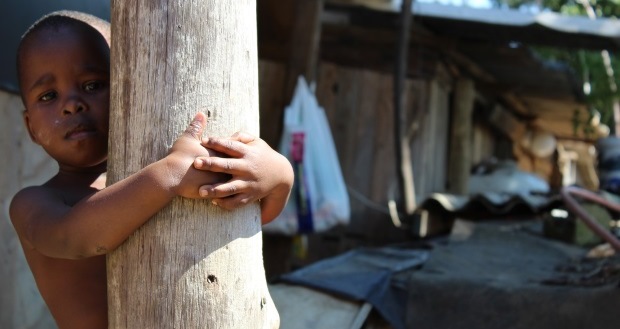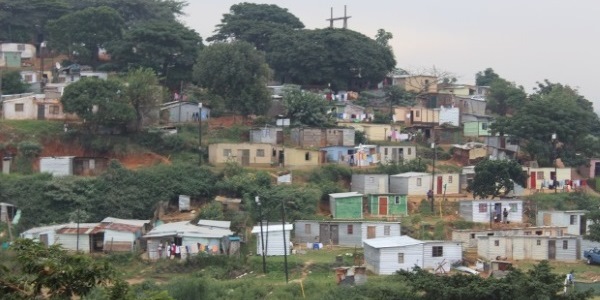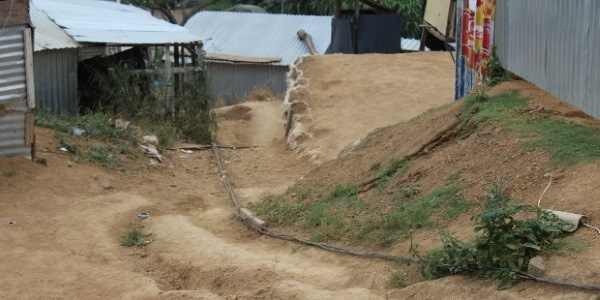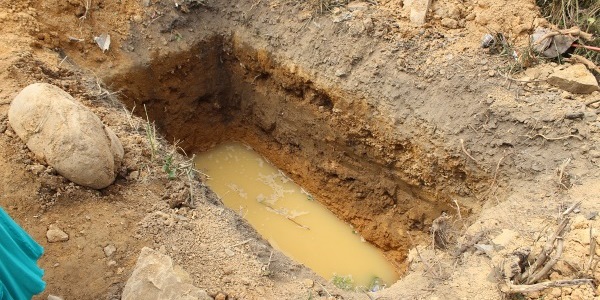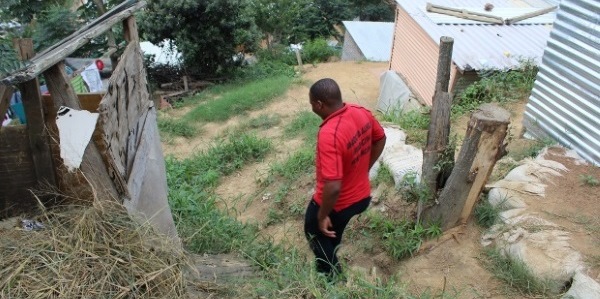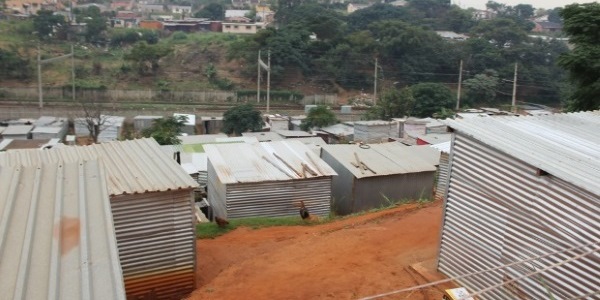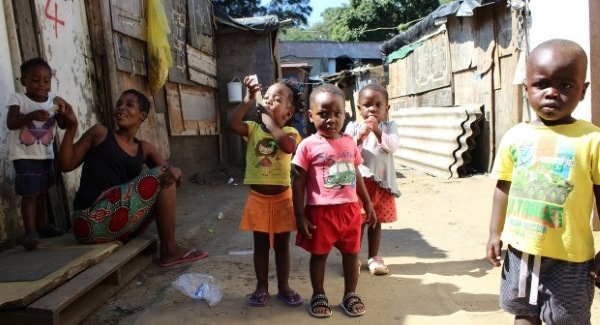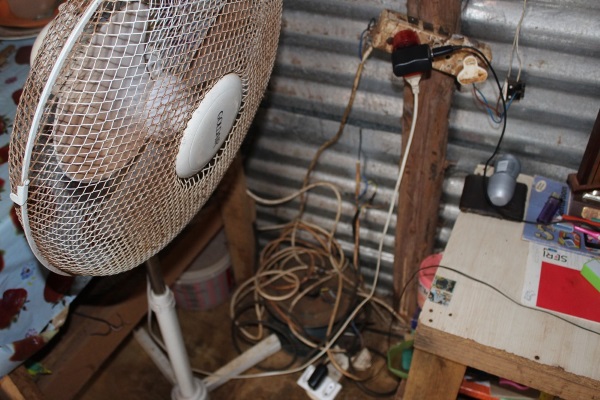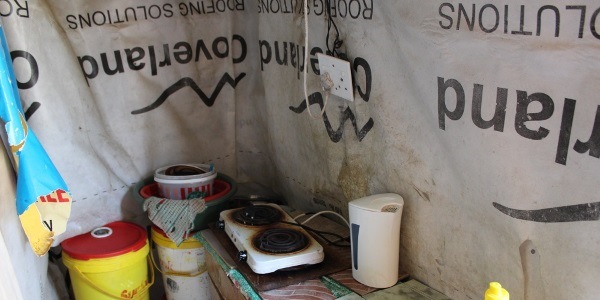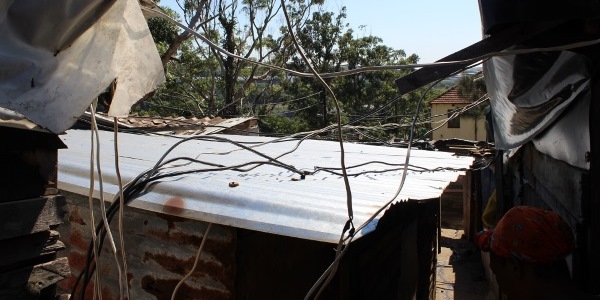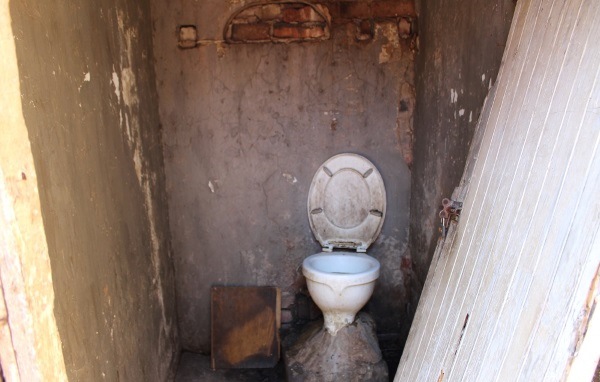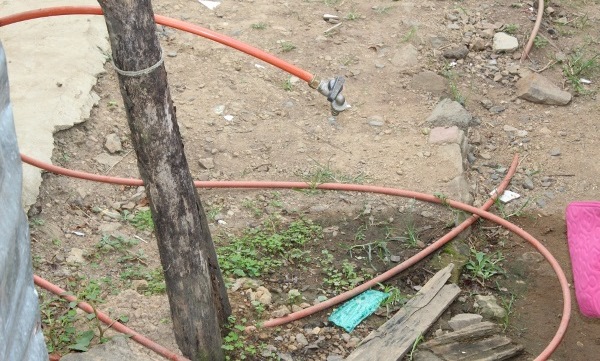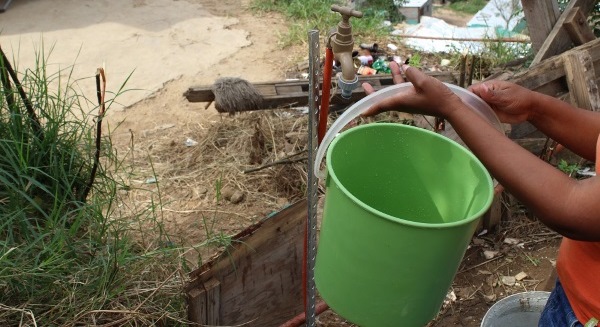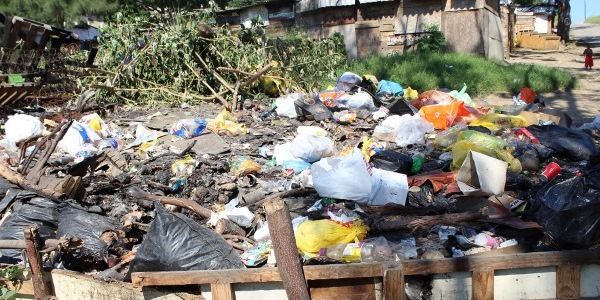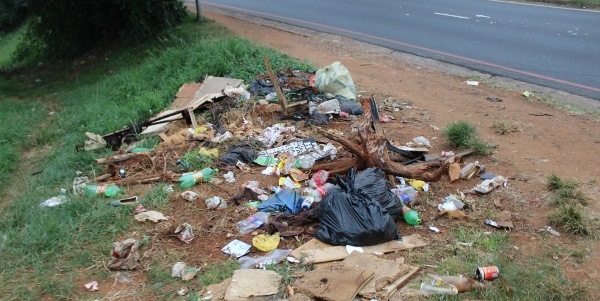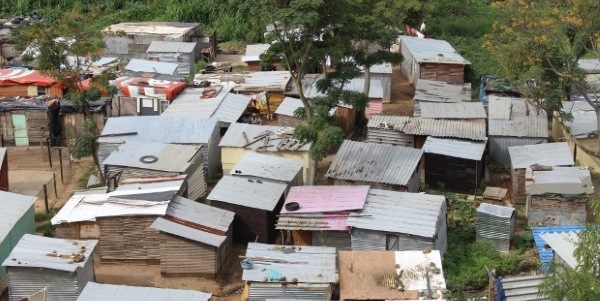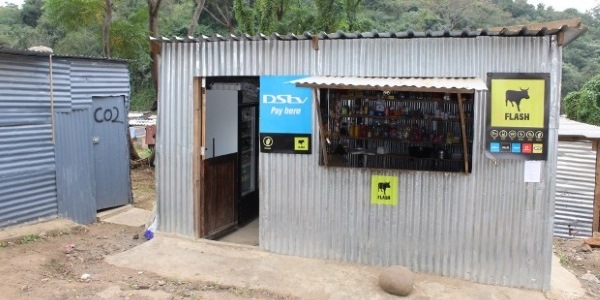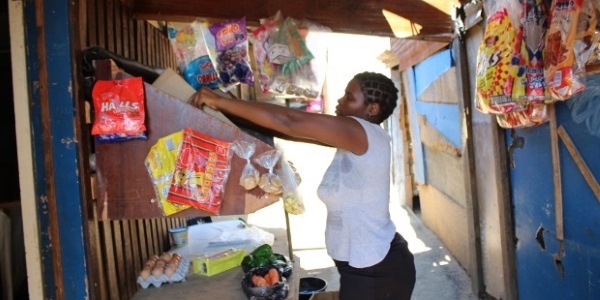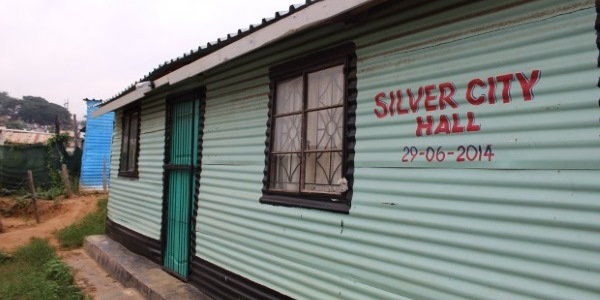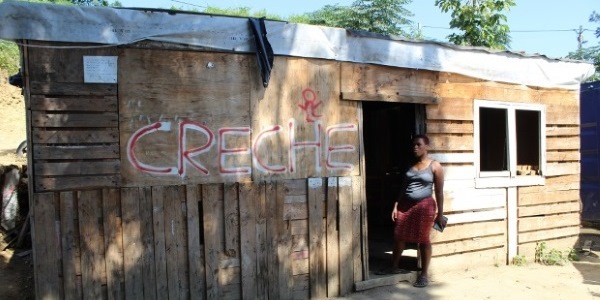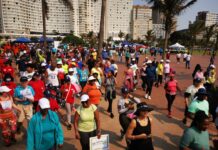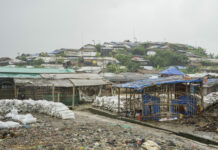On 4 May, Minister of Human Settlements, Lindiwe Sisulu, gave a speech in Parliament highlighting the progress that the ministry has made in terms of housing. She claimed that 1,003 new houses are being built each day, and that the number of people living in informal settlements has decreased from 17% in 2002 to 11% in 2014. She also acknowledged the squalor that residents have to live in, due to their economic disadvantage and rising levels of inequality. QINISO MBILI visited a few of Durban’s informal settlements to meet some of the 11% who have no way out of their desperate situations.
Inhabitability
Most, if not all, informal settlements are built illegally in places that are not conducive for residence. Some of these shacks have been built right on top of sewage tanks and pipes. These sometimes burst and the whole settlement will stink of human waste and the one who has built right on top of it will suffer the most.
In Briardene informal settlement, a fair amount of the shacks are built on the edge of a main road, which poses a risk to the occupants. “Taxis have crashed into my shack two separate times since the year began,†said Nonceba Mnukwa, one of the residents. “Luckily we were not injured, but this disrupted my life as I had to rebuild.â€
Rain also brings a variety of problems for someone living in a shack because of the poor structure. The shacks easily get flooded and the dwellers’ lives are disrupted after each rainy day or night. Their furniture gets damaged and the unstable electricity connections blackout. When the rains come at night, it’s likely that the adults won’t be able to go to work the following day, and sometimes even the children won’t go to school as they will have to be repairing the damage. Most of these communities are built on steep hills and after these rains, the terrain is almost impossible to walk on.
Most informal settlements are desperately overpopulated, with some families having up to 11 people living in one shack. In this case, people are deprived of dignity and privacy. “My son stays out till late because he cannot enjoy his own space here,†says Bathabile Makhoba, “I am worried this will drive him to drugs.†Makhoba is not in good health and she lives with a family of eleven in a one-room shack.
The internal setup of a shack is one of the main reasons it is easy to catch on fire. The electricity connections lie dangerously open on the floor and could cause a fire anytime.
Most shacks are covered with a cloth from the inside to cover holes in the zinc wall and block out cold air, but these are fastest to pick up fire from a fallen candle. Shacks are also built close to each other and this maximises the amount of damage done by shack fires.
The most unsettling feature of these settlements is the way residents have illegally and dangerously connected their electricity. While walking around the communities, one has to be careful not to step on a live wire as they lie everywhere. Severe injuries and even deaths due to electrocution are common in shack communities.
“We are not stealing the electricity, we are taking it,†says Nomthi Mkhize. “We do not have a choice because we do not get any form of service delivery here.â€
Service delivery is a myth
One of the biggest worries of a shack dweller is being evicted at any time of the day or night. This is because these communities are usually built illegally in municipal land. This also means that they do not have formal residential addresses as their settlements are not recognised as residential zones. Residents have to travel back to their homelands, many kilometres away, just to get proof of residence so they can open bank accounts or register their SIM cards.
Here, dignified toilets are only a dream. They have to use communal toilets or build their own pit toilets. Built so close to their living spaces, these are a health risk and as they are not built by professionals, they sometimes implode.
Shack dwellers usually depend on illegal connections for water too. Usually, someone in the area is an expert in connecting the pipes and is paid for this. Water is connected from water pipes from nearby suburbs or townships. This angers the residents of those particular townships and suburbs because it spikes their water bills.
Waste management services are a nonexistent here, so residents have to figure where to get rid of their trash. Usually, a shallow and wide hole is dug and they use it as a trash site. With everyone using it, this hole takes only a few days to fill up. It is usually close by and this poses a health risk and invites huge rats.
Although these areas are not recognised as residential and don’t qualify for service delivery, they do not get left out when politicians start campaigning for elections. “They always come here when election time is about to come and give us empty promises,†says Lungelo Hlongwane from Silver City. “Sadly, because of desperation, we always fall for it, thinking this time it’s going to be different.â€
Safety issues
In Silver City, residents complained about people that chase them out of their shacks for the sole purpose of selling them to prospective shack dwellers. “I was repeatedly harassed by a man from Glebelands hostel, he wanted me to vacate my shack so he could sell it after I am gone,†said Thobeka Shazi. It is said these shacks are sold between R4, 000 to R6, 000.
In these communities, everyone is trying to make ends meet whether legally or illegally. The crime rate is very high among informal settlements. Mzayfani Manqele’s shack was broken into two weeks ago. “There is nothing you can do, even if you put burglar bars, they just tear open the zinc walls of your shack and they get in,†he complained. He says it will take him a long time to replace the stolen items because he is unemployed.
Determination
While the circumstances that shack dwellers live under are dehumanising, they are determined to do things for themselves. Many informal settlements have functional tuck shops; bringing household necessities closer to the residents. There are also entrepreneurs; this means some have taken the opportunity to simultaneously make a living while helping the community.
The residents of Silver City emphasised their sense of community when they built their own community hall in 2014. They use this hall for meetings, church, and other communal activities.
All these communities also have a form of crèche or childminding service. In Briardene, there was a crèche but it has been unused for a few weeks as it was damaged by the rain. The other two settlements had people who mind others’ children for a fee.
Most residents share a similar story of how they ended up living in shacks. They are mostly children of uneducated miner fathers and domestic worker mothers who are looking for a better life in the big city. Most have poverty-stricken families in the homelands miles away waiting for them to send whatever they can every month. “Back home there is an abundance of land and there is a decent house but I cannot just sit there and do nothing with my life,†says Thakasani Shandu, who is a matriculant who works as a gardener.
Unfortunately, the life they subject themselves to tends to be harsher than humanly acceptable.

